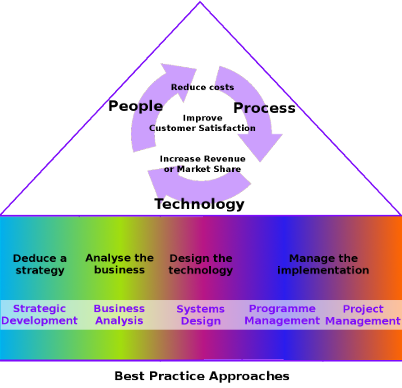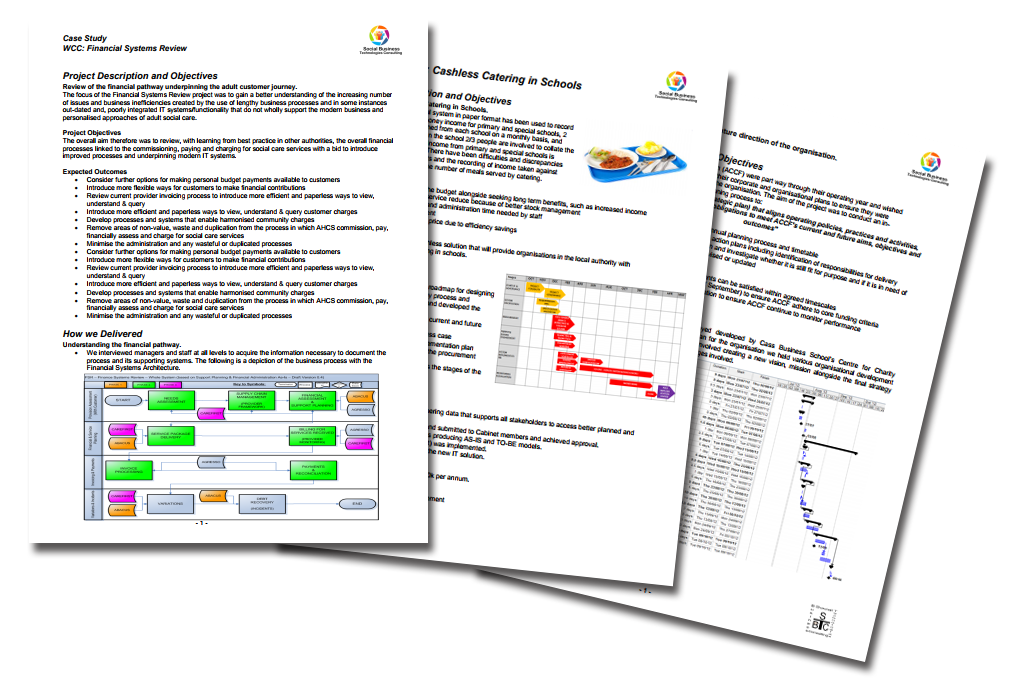Top 22 Frequently Asked Questions.
Below we’ve listed the top 22 questions we are asked about or hear most frequently on the subject of business transformation.

SBTC Ltd
INCREASE BUSINESS GAIN
REDUCE OPERATIONAL STRAIN
We hope this helps to address some of your questions or concerns about the subject.
Please note we have included a number of links to further information, which have been thoroughly researched before inclusion.
Strategy.
1. What is business transformation?
In management, business transformation is a management strategy that involves making fundamental changes in how business is conducted in order to help cope with shifts in market environment.
“Business Transformation is the process of fundamentally changing the systems, processes, people and technology across a whole business or business unit, to achieve measurable improvements in efficiency, effectiveness and stakeholder satisfaction.
As such, a business transformation programme is likely to include any number of change management projects, each focused on an individual process, system, technology, team or department.”
Outcomes the business will derive from this strategy will be to align new capabilities with new opportunities to Reduce costs, improve customer satisfaction, increase profits or market share.
Source: Wikipedia
2. What is business transformation Strategy?
Every business is unique and business transformation seeks to introduce fundamental changes in how the business operates and copes with shifts in the market environment.
Areas that could be investigated include:
• Analyse the Business Environment and Envision the Future
• Identify the Strategic Options
• Evaluate and Select key Strategies
• Develop the outline business and financial case
See our STRATEGIC DEVELOPMENT webpage for more tools and techniques.
3. Why is business transformation important for business?
Business transformation is not just important, it is vital for any organization to succeed in today’s competitive environment of constant change.
Disruptions in technology, market needs and wants, the product cost/service delivery model, and world economic trends force businesses to either reinvent themselves to succeed or die away.
Many businesses have successfully implemented business transformation and reinvented themselves, thus satisfying their clients and increasing value for their shareholders by staying ahead of the competition.
For examples of businesses that have not transformed to follow market trends, see our blog “Why Transform Business”
4. How can business transformation help make our business more competitive?
Outcomes from a business transformation programme that Improve the internal health and longevity of the business are those that improve market share and or reduce costs.
Outcomes from a business transformation programme that improve the external future market position are those that improve customer satisfaction or enable the business to enter new markets.
See our paper How to TRANSFORM a Business
5. What is the difference between change management and business transformation?
Here we offer an extract from a paper by Ron Ashkenas, taken from the Harvard Business Review, “We Still Don’t Know the Difference Between Change and Transformation”. “Change management” means implementing finite initiatives, which may or may not cut across the organization. The focus is on executing a well-defined shift in the way things work.
“Transformation” is another animal altogether. Unlike change management, it doesn’t focus on a few discrete, well-defined shifts, but rather on a portfolio of initiatives, which are interdependent or intersecting.
More importantly, the overall goal of transformation is not just to execute a defined change but to reinvent the organization and discover a new or revised business model based on a vision for the future. It’s much more unpredictable, iterative, and experimental. It entails much higher risk.
And even if successful change management leads to the execution of certain initiatives within the transformation portfolio, the overall transformation could still fail.
Source: HBR Link (more info)
6. What is Transformational Leadership?
A key requirement of leaders is to create an appealing vision of the future, and develop a strategy for making it a reality. Regardless of obstacles, they maintain a motivation among their team to reach the vision.
Managers, on the other hand, have the task of making complex tasks run smoothly, and ensuring that the mechanics of change work to maintain the operational effectiveness of the team.
Kotter’s diagram “The relationship of Leadership & Management (Kotter, 1996)“ shows the need for a balanced approach to leadership and management, with the risks involved in focusing too much on either discipline.
7. Why UK clients hire management consultants to support business transformation projects?
The UK’s consulting industry is the second most mature in the world behind the United States, and is currently worth around £10 billion according to the latest estimates available.
However, with the UK economy slowing amid a productivity crisis and the impending completion of the Brexit project, many companies are looking to cut costs.
Ultimately, when asked to define consulting, clients chose answers involving one of two factors. 35% said that it was either down to transformational support, or external strategic advice. Below we have outlined the role and skills required of a management consultant:
Management consultant role
• Advise boards of directors and senior management
• carry out research and data collection to understand the organisation
• conduct analysis
• interview the client’s employees, management team and other stakeholders
• run focus groups and facilitate workshops
• prepare business proposals and presentations
• identify issues and form hypotheses and solutions
• present findings and recommendations to clients
• implement recommendations or solutions and ensure the client receives the necessary assistance to carry it all out
• manage projects and programmes
• lead and manage those within the team, including analysts
• liaise with the client to keep them informed of progress and to make relevant decisions.
Skills
• the ability to work as part of a team
• interpersonal and communication skills, both oral and written
• creativity and innovation
• problem-solving and strategic planning ability
• analytical skills
• flexibility
• the ability to cope with pressure and challenges
• commercial awareness and understanding of business environments.
8. Why businesses feel they don’t realise the benefits sought from business transformation projects?
There are many reports that highlight that up to 70% of transformation programs fail to deliver their actual targets.
Understanding the major challenges of a transformational program and the risks before executing the programme can help to increase the chances of a higher success rate than quoted above. These may include:
Unclear view and misunderstood business’s vision
Understanding of the organizational structure and culture
Applying the same transformation solutions to diverse business needs
Reorganizing organizational resources rather than achieving true transformation
Not enough understanding existing process flows and their objectives
Failure to prioritize the factors that need to be transformed
Overestimating the goals of transformation in the excitement of making change
Communication and building relationship problems
Failure to observe the necessary management discipline in different departments
Failure to set specific, measurable, attainable, realistic, and timely (SMART) goals for transformation.
Source: HBR: Why So Many High-Profile Digital Transformations Fail
9. Are there any examples of successful business transformation projects?
Below we highlight examples of businesses that have or are changing the way things are done.
International examples.
Five Case Studies of Transformation Excellence – BCG
Successful Business Transformation within a Russian IT Company
UBER – Transformed transportation (Taxi) market i.e. ‘Uber-style’ Bus service announced to improve transport in Tees Valley region.
AIRBNB – Transformed short stay rental market
SPACEX – Transforming intergalactic travel
BITCOIN – Transforming currency markets
10 multi-national companies – That completely Reinvented themselves
UK examples.
Flagship example of a Gigabit City – York
Getting robot workers to relieve humans of repetitive back-office jobs – Blue Prism
Providing SMEs outside of traditional bank lending requirements, access to capital – Funding Circle
AMAZON, ACADO, JUST EAT and others are changing the business landscape.
I am sure you can think of other examples of businesses that have transformed themselves, industries or markets.
Analysis.

Business Strategy, Business Analysis, Business Systems Design and Project Management Consultants in the Midlands.
10. What are the types of business transformation?
There are different types of Business Transformation that describe the levels within the business that receive the focus of the transformation, as highlighted below.
Radical (business model)
Radical transformation is where the overall business establishes a new business model and core concepts, which is often visible externally.
Architectural (business units/services)
Architectural transformation is where the enterprise architecture is overhauled, but the fundamental work of the firm remains the same.
Modular (processes/systems)
Modular transformation is where there are changes to the core design of the enterprise, but the overall enterprise architecture remains unchanged.
Incremental (functions/systems)
Incremental transformation is where the enterprise design is refined and extended, with limited changes to technology and operations.
11. What methods are used to transform businesses?
Below we highlight three methodologies that have gained significant traction in the business transformation market.
The Open Group Architecture Framework (TOGAF).
A framework for enterprise architecture that provides an approach for designing, planning, implementing, and governing an enterprise information technology architecture. TOGAF is a high-level approach to design.
Business Transformation Methodology2.
The Business Transformation Management Methodology (BUSINESS TRANSFORMATIONM²) is a four-phase holistic and integrated business transformation management methodology developed by SAP Business Transformation Services
CHAMPS2.
The CHAMPS2 change management method can help to manage the diverse project environment and deliver holistic change in a local authority context.
See our article posted on LinkedIn “Business Transformation Story” for more information.
12. What are the pain points / challenges experienced during Business Transformation?
Under performing processes / business models
People’s resistance to change
Cost and Complexity of business transformation programmes
Technology churn (Following the fashion – digital example is businesses copying what the industry is doing)
Knowledge and skills gaps in new technologies
Uncertain technologies (integrating and bedding in new technologies)
High level of business transformation projects fail to achieve objectives
Rate of disruption in Industries, markets, sectors, products and services
A vision of the future in place but little realistic idea how (plan of action) to attain that vision.
Design.

Business Transformation specialists based in Leicester, East Midlands.
13. What is digital business transformation?
Digital Transformation is the novel use of digital technology to solve traditional business problems. These digital solutions enable – other than efficiency via automation – new types of innovation and creativity, rather than to simply enhance and support traditional methods.
Digital business transformation (DBT) is about more than devices and software. It is about organizational change through the use of digital technologies to materially improve performance of the business.
Source: IMD
14. What tools and techniques are used to develop and execute business transformation projects?
Follow these links to SBTC Services pages where we highlight many tools and techniques that are used (for more information highlight and google the required tool or technique):
Projects.

15. What are business transformation Projects?
From our experience, we have found the key catalyst for change is the business’s focus on improving its health and longevity.
An extract on our website highlights the drivers, benefits, types and outcomes a business seeking to change the way it operates could expect to derive from the transformation.
For more information see the DRIVER page on our website.
16. Should business transformation initiatives be a project or programme?
This depends on the outcome you are looking for. We suggest using the Managing Successful Programmes definitions and guidelines for deciding whether to create projects or programmes.
Programmes deliver outcomes and benefits. Projects deliver outputs.
• Outcomes: when individuals with the necessary capability start to use the new outputs as part of their business as usual (BAU).
• Benefits: the measurable improvements delivered because of individuals operationalizing the outputs.
• Outputs: are the physical entities that are delivered. These products can be physical things such as buildings or software programs, or intangible things such as policies.
Programme management and project management are complementary approaches.
Follow these links to our PROJECT and PROGRAMME webpages for more tools and techniques
17. How do you measure a business transformation programme/project outcomes?
The type and nature of the measurements are considered when choosing the elicitation method. Performance measures may be quantitative, qualitative, or both, depending on the value being measured.
Performance measures may be influenced or imposed by third parties such as solution vendors, government bodies, or other regulatory organizations.
• Quantitative Measures: are numerical, countable, or finite, usually involving amounts, quantities, or rates.
• Qualitative Measures: are subjective and can include attitudes, perceptions, and any other subjective response. Customers, users, and others involved in the operation of a solution have perceptions of how well the solution is meeting the need.
Business Performance Measures
Business performance measures are a set of quantifiable metrics taken from various sources that together with an appropriate analytical process, allows the management of a business to track and assess the current status of a specific business, project or process.
Link to further information: Setting Key Performance Indicators
Solution Performance Measures
Business goals, objectives, and business processes are common sources of measures when measuring solution performance.
Business Objectives
The measurable results that the enterprise wants to achieve. Can provide a benchmark against which solution performance can be assessed.
Metrics and Key Performance Indicators (KPIs)
Metrics and key performance indicators measure the performance of solutions, solution components, and other matters of interest to stakeholders. Metrics and reporting are key components of monitoring and evaluation.
Monitoring is a continuous process of data collection used to determine how well a solution has been implemented as compared to the expected results.
Evaluation is the systematic and objective assessment of a solution both to determine its status and effectiveness in meeting objectives over time and to identify ways to improve the solution to better meet objectives.
Reporting
A key aspect of measuring business performance is getting and sharing feedback. Typically, reports compare the baseline, current metrics, and target metrics with calculations of the differences presented in both absolute and relative terms.
In some situations, trends are more credible and important than absolute metrics.
Visual presentations tend to be more effective than tables, particularly when using qualitative text to explain the data.
18. Why do business transformation projects/initiatives fail?
Business transformation GURU, John P Kotter highlights in his paper “Leading Change: Why Transformation Efforts Fail “, 8 successful changes stages that businesses go through.
• Create a sense of urgency
• Build a guiding coalition
• Form a strategic vision and initiatives
• Enlist a volunteer army
• Enable action by removing barriers
• Generate short-term wins
• Sustain acceleration
• Institute change
Each stage has its corresponding fail state or pitfall and these are the key points at which transformation efforts fail.
Kotter advocates that each stage be worked through sequentially, providing information for the next stage. Skipping stages to try to accelerate the process invariably introduces problems, as work not done in the prior stages can have a devastating impact.
Link: See the SBTC business transformation Checklist an aide-memoir to support your initiation and delivery of business transformation initiatives.
19. What is agile business transformation?
Agile business transformation is the ability of a business to react to fast changing needs and demands of customers, technologies, market movements, that may or may not be predictable. To stay with the pace of change businesses use various approaches to implement new capabilities as quickly as possible.
Agile delivery approaches such as scrum support the rapid implementation of capabilities emanating from a business transformation programme. One of the more popular approaches used is PRINCE2 Agile.
20. What are typical durations of business transformation projects?
3 months to 18 months, although, some programmes can run for a number of years.
21. Is there any business transformation training available?
The following links serve as a start point for courses and should be followed with additional searches to identify other academic or professional organisations offering courses in this subject area.
Taught Learning – Universities:
University of Surrey
Cambridge Institute for Sustainability Leadership (CISL)
University of Warwick
University of Dundee
The Open University Business School (OUBS)
Self Learning:
The SEEK Group (Future Learn)
22. What is the difference between traditional and agile methods?
Agile can be very different for people used to traditional waterfall methods for software development.
With waterfall methods the process is sequential. You start by gathering requirements, making plans and going through procurement processes. You then design the product and build it. In the final stage you test and release it to the public.
It’s only at this end stage that you get feedback and find out if it works for your users. You only have one chance to get each part of the project right, because you don’t return to earlier stages.
Agile takes a different approach. You do all these things – gathering requirements, planning, designing, building and testing – at the same time.
You start small in the discovery and alpha phases.
You research, prototype, test and learn about your users’ needs before you start building the real service in the beta phase.
You only go live when you have enough feedback to show your service works for your users and meets their needs.
You continuously learn and improve to build a service that meets user needs.
Source: Free agile primer training Link to .GOV